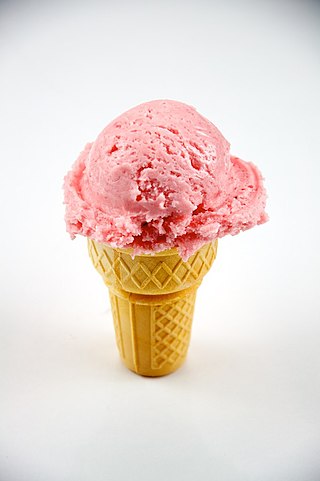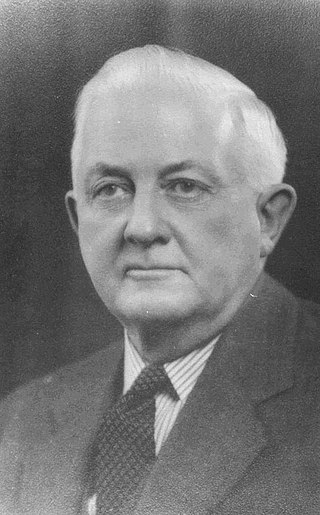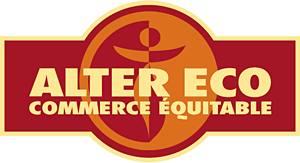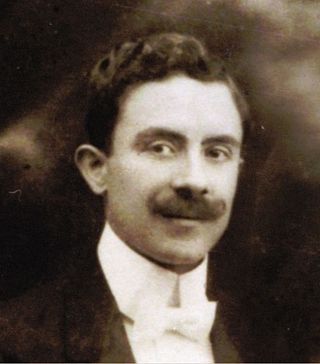
The Hershey Company, often called just Hershey or Hershey's, is an American multinational confectionery company headquartered in Hershey, Pennsylvania, United States, which is also home to Hersheypark and Hershey's Chocolate World. The Hershey Company is one of the largest chocolate manufacturers in the world; it also manufactures baked products, such as cookies and cakes, and sells beverages like milkshakes, as well as other products. The Hershey Company was founded by Milton S. Hershey in 1894 as the Hershey Chocolate Company, originally established as a subsidiary of his Lancaster Caramel Company. The Hershey Trust Company owns a minority stake but retains a majority of the voting power within the company.

A chocolate bar is a confection containing chocolate, which may also contain layerings or mixtures that include nuts, fruit, caramel, nougat, and wafers. A flat, easily breakable, chocolate bar is also called a tablet. In some varieties of English and food labeling standards, the term chocolate bar is reserved for bars of solid chocolate, with candy bar used for products with additional ingredients.

An ice cream cone or poke (Ireland/Scotland) is a brittle, cone-shaped pastry, usually made of a wafer similar in texture to a waffle, made so ice cream can be carried and eaten without a bowl or spoon, for example, the Hong Kong–style bubble cone. Many styles of cones are made, including pretzel cones, sugar-coated and chocolate-coated cones. The term ice cream cone can also refer, informally, to the cone with one or more scoops of ice cream on top.

Planters Nut & Chocolate Company is an American snack food company now owned by Hormel Foods. Planters is best known for its processed nuts and for the Mr. Peanut icon that symbolizes them. Mr. Peanut was created by grade schooler Antonio Gentile for a 1916 contest to design the company's brand icon. The design was modified by a commercial artist and has continued to change over the years.

The Heath bar is a candy bar made of toffee, almonds, and milk chocolate, first manufactured by the Heath Brothers Confectionery in 1928. The Heath bar has been manufactured and distributed by Hershey since its acquisition of the Leaf International North American confectionery operations late in 1996.

Milk chocolate is a form of solid chocolate containing cocoa, sugar and milk. It is the most consumed type of chocolate, and is used in a wide diversity of bars, tablets and other confectionery products. Milk chocolate contains smaller amounts of cocoa solids than dark chocolates do, and contains milk solids. While its taste has been key to its popularity, milk chocolate was historically promoted as a healthy food, particularly for children.
Butterfinger is a candy bar manufactured by the Ferrara Candy Company, a subsidiary of Ferrero. It consists of a layered crisp peanut butter core covered in a "chocolatey" coating. It was invented by Otto Schnering of the Curtiss Candy Company in 1923. A popularity contest chose the name.
Post Consumer Brands is an American consumer packaged goods food manufacturer headquartered in Lakeville, Minnesota.

Life Savers is an American brand of ring-shaped hard and soft candy. Its range of mints and fruit-flavored candies is known for its distinctive packaging, coming in paper-wrapped aluminum foil rolls.

Reese's Peanut Butter Cups are an American candy by the Hershey Company consisting of a peanut butter filling encased in chocolate. They were created on November 15, 1928, by H. B. Reese, a former dairy farmer and shipping foreman for Milton S. Hershey. Reese was let go from his job with Hershey when the Round Barn which he managed was shut down for cost-saving measures. He subsequently decided to start his own candy business. Reese's are a top-selling candy brand worldwide, with more than $2 billion in annual sales.

Harry Burnett Reese was an American inventor and businessman known for creating the number one-selling candy brand in the United States; Reese's Peanut Butter Cups, and founding the H. B. Reese Candy Company. In 2009, he was posthumously inducted into the Candy Hall of Fame.
The Clark Bar is a candy bar consisting of a crispy peanut butter/spun taffy core and coated in milk chocolate. It was introduced in 1917 by David L. Clark and was popular during and after both World Wars. It was the first American "combination" candy bar to achieve nationwide success. Two similar candy bars followed the Clark Bar, the Butterfinger bar (1923) made by the Curtiss Candy Company and the 5th Avenue bar (1936) created by Luden's.

Chocolate is a food product made from roasted and ground cocoa pods mixed with fat and powdered sugar to produce a solid confectionery. There are several types of chocolate, classified primarily according to the proportion of cocoa and fat content used in a particular formulation.

Alter Eco refers to two alternative trading organizations, founded in 1998 by Tristan Lecomte in France, and followed by Mathieu Senard and Edouard Rollet in the United States, and Ilse Keijzer in Australia.

Leonidas Kestekides (1876–1948) was an Ottoman empire-born Greek chocolate manufacturer, founder of the internationally famous Leonidas company in Belgium. The company's primary focus is pralines, but they also sell marzipan, solid chocolates, and other confectionery.
The Greek community in Belgium numbers around 25,000 to 35,000 people.

Belgian chocolate is chocolate produced in Belgium. A major industry since the 19th century, today it forms an important part of the nation's economy and culture.
The following outline is provided as an overview of and topical guide to chocolate:

Justin's is an American brand of natural and organic nut butters and peanut butter cups. The Boulder-based company manufactures and markets jars and single-serve squeeze packs of nut butter, along with various kinds of organic peanut butter cups. Justin's peanut butter cups are USDA-certified organic and use Rainforest Alliance Certified cocoa. Both the peanut butter cups and nut butters are distributed through stores such as Whole Foods Market, Sprouts Farmers Market, Starbucks, and Target in the United States.

Tony's Chocolonely is a Dutch chocolate company founded in 2005 that produces and sells chocolate. In 2018, the company's market share in the Netherlands was 18 percent, making it one of the country's largest chocolate manufacturers.















